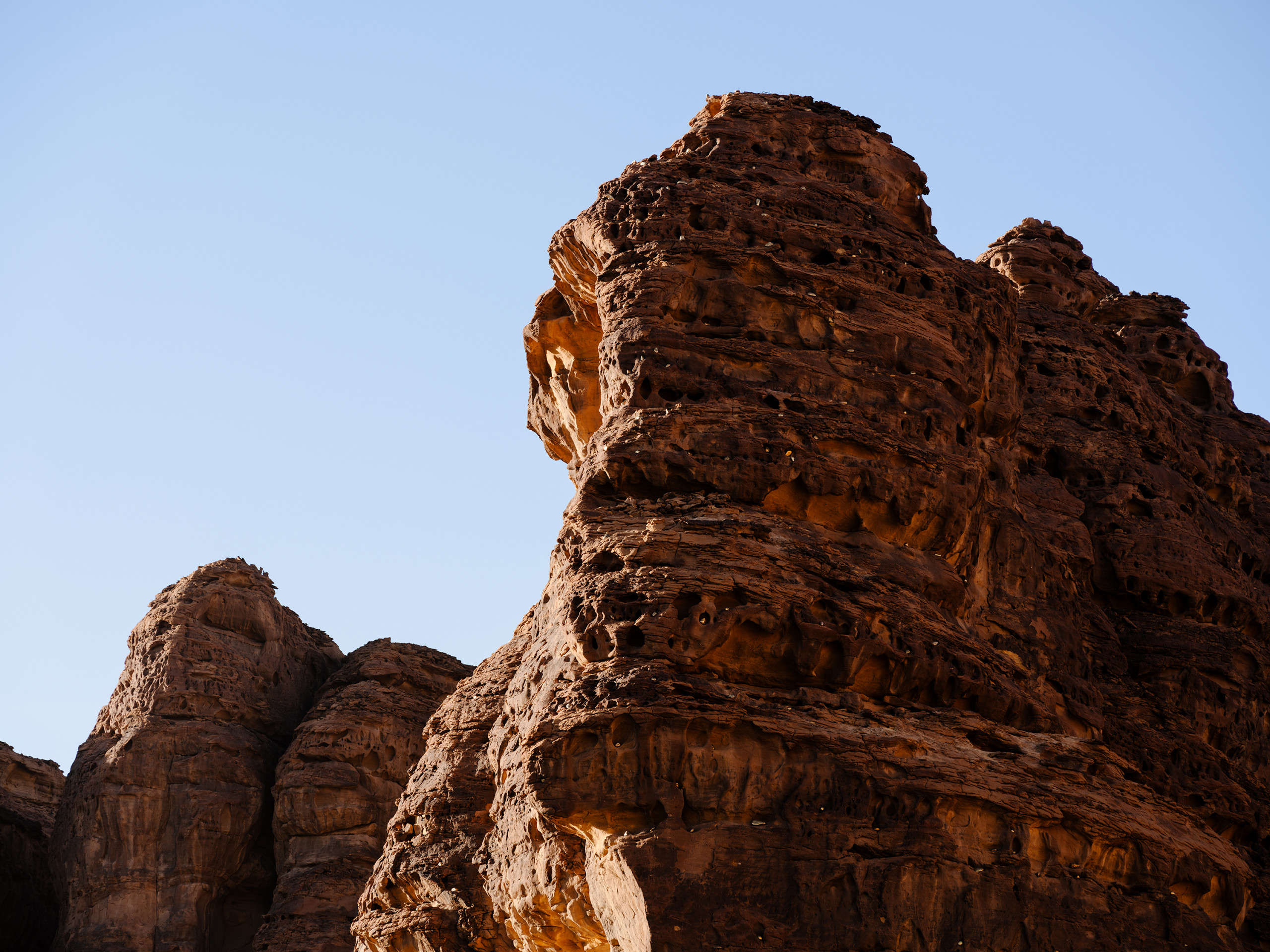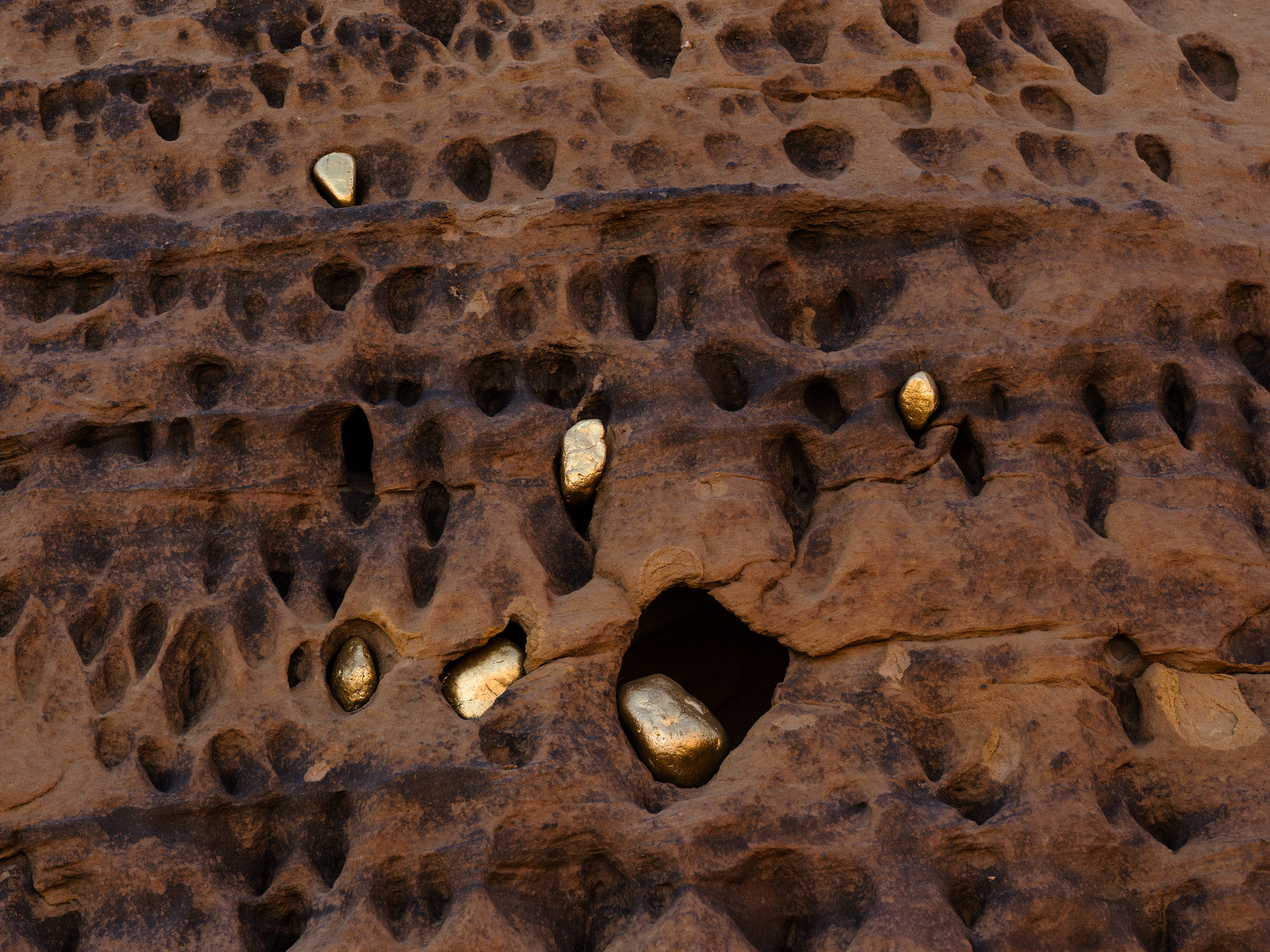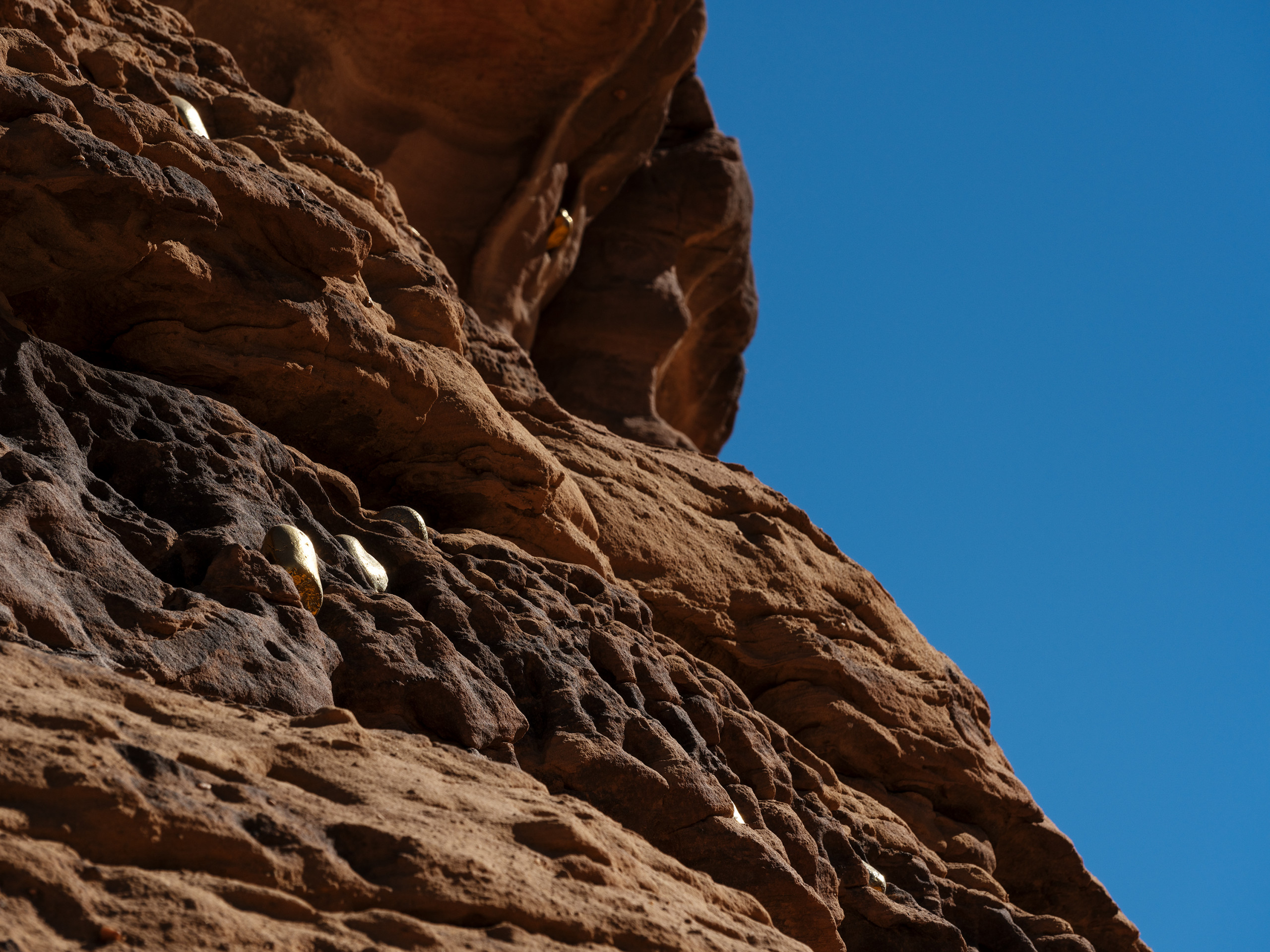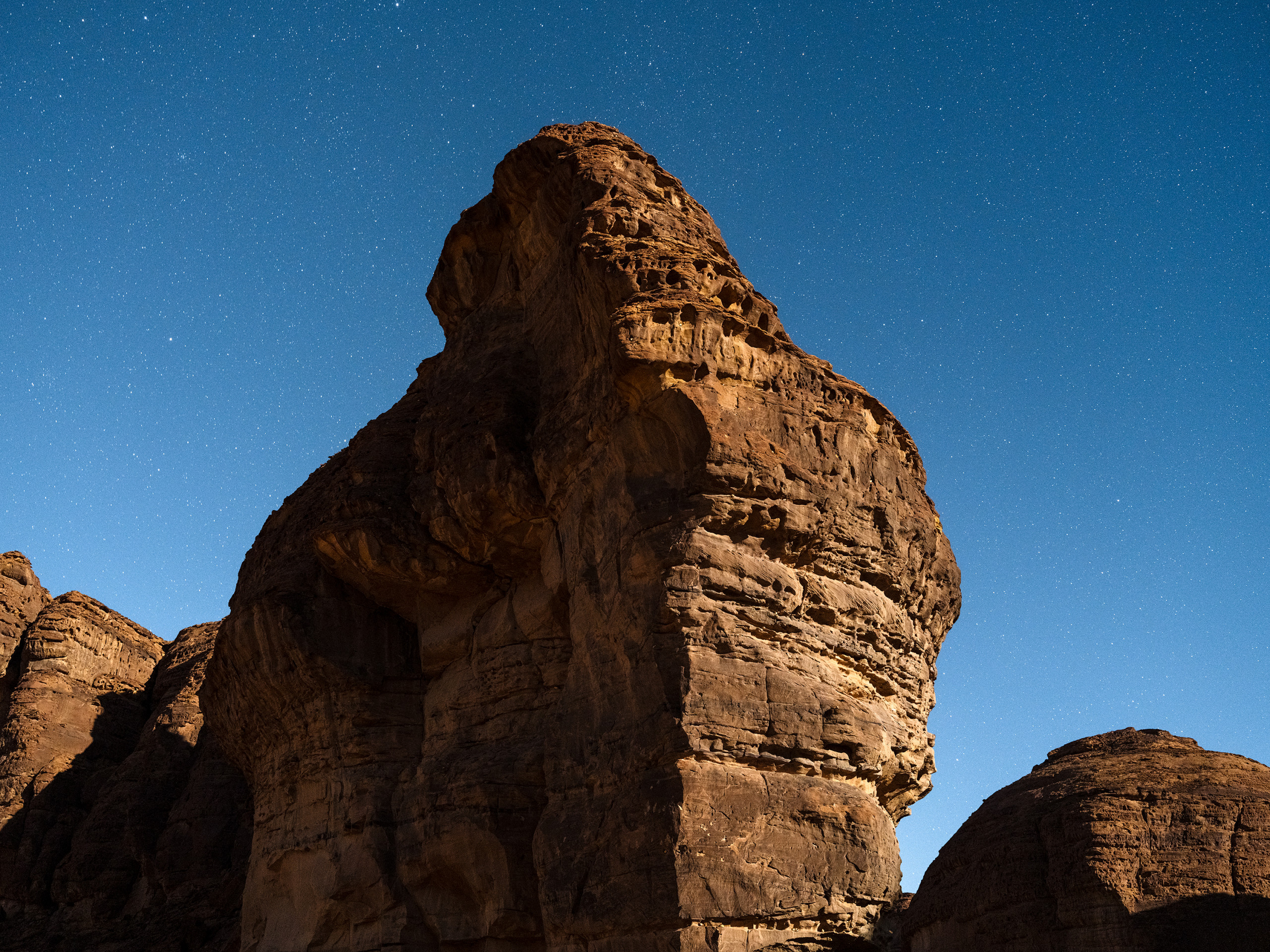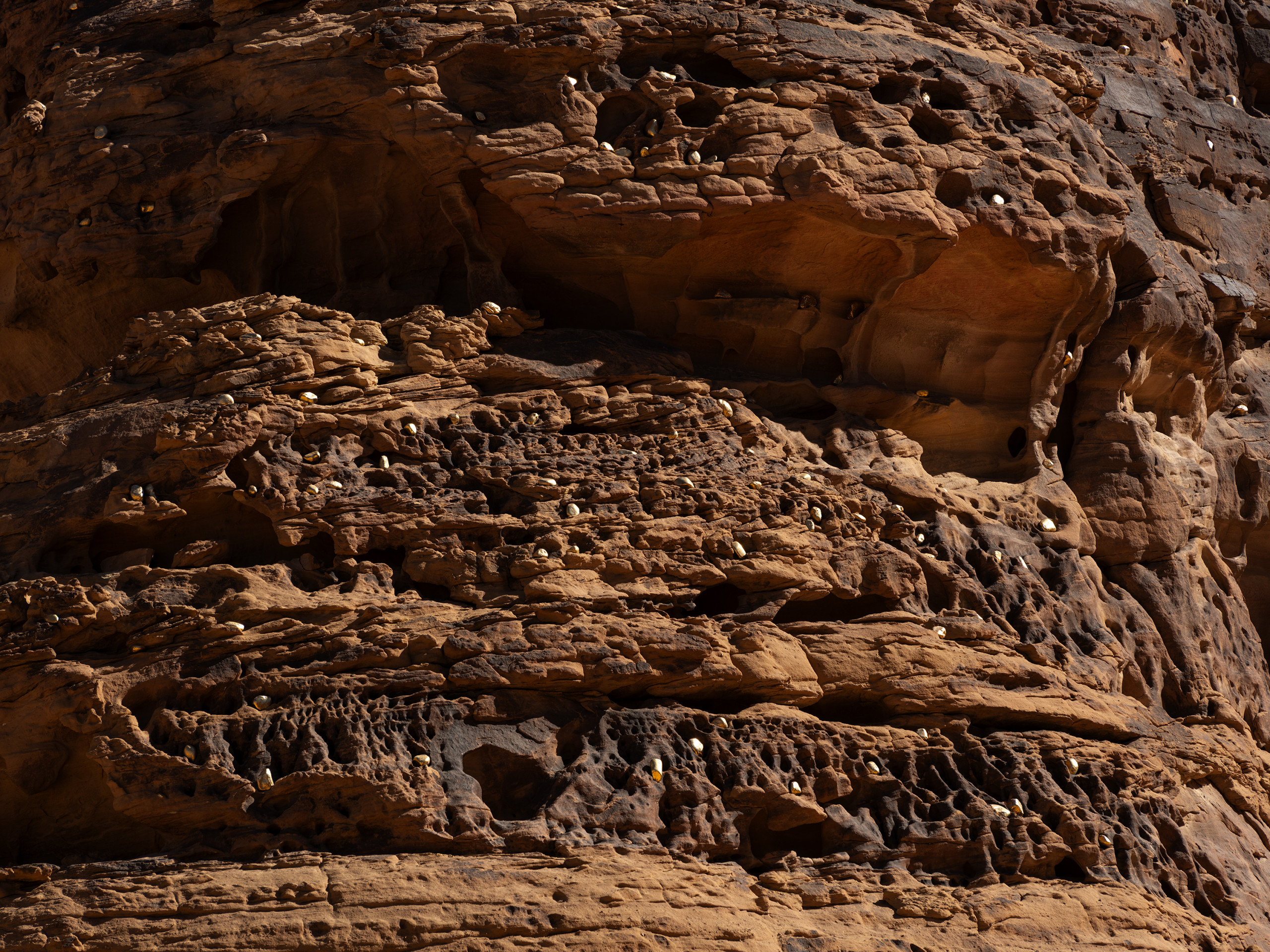Bosco Sodi
When I Saw my Reflection
Following Bosco Sodi’s philosophy, When I Saw My Reflection takes advantage of the uniquely beautiful organic formations and accidents that already exist in the rock formations of AlUla: fissures, and divisions that have asserted themselves throughout millions of years. Being respectful to the site, the artist has placed volcanic rocks of various sizes glazed with gold on two opposite rock formations. By working with both rock faces, the artwork lets the light of day enter as a variable in dialogue between them as it is absorbed and reflected by the glaze at shifting angles of sunlight. As Sodi explains, “the morning reveals itself and at the same time it overshadows, the afternoon steals its light, and in the mid-day they share and create a tension of light between them.”
The golden rocks of the installation appear to be paired with a coveted counterpart, assigned to them by the same accident that gave rise to the wall’s formation; at the same time, they appear to have been there forever. Thus, they become something that has emerged through the erosion of time, a gem engraved by the rock itself.
Through his intervention, Sodi speaks about impermanence, the passing of time, and our relation with nature, but also about the earthly and divine feeling that a site as beautiful and unique as AlUla can inspire. The crafted gold creates an upsurge of tension because it transcends its origins, and because gold emanates much more than the accidental process that entails and surrounds it. For the artist, gold “communicates feelings of purity, innocence, and even a connection with the divine, creating a receptive dichotomy between letting go of the reins and a sort of apparent orchestration.” Through his use of this peculiar yellow metal, Sodi seeks to create a dialogue between the illuminated gold and its shadow, the seen and the unseen, objectivity and transcendence.
